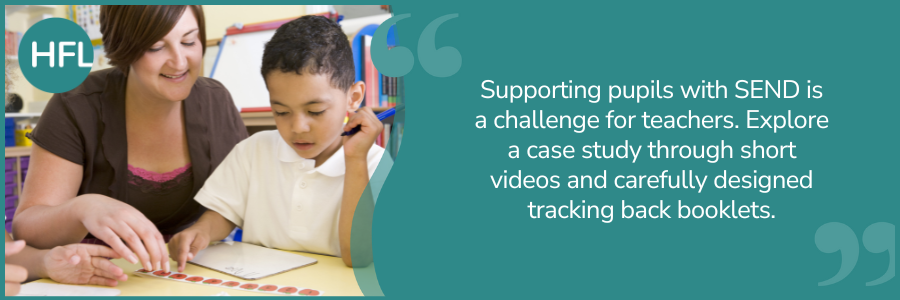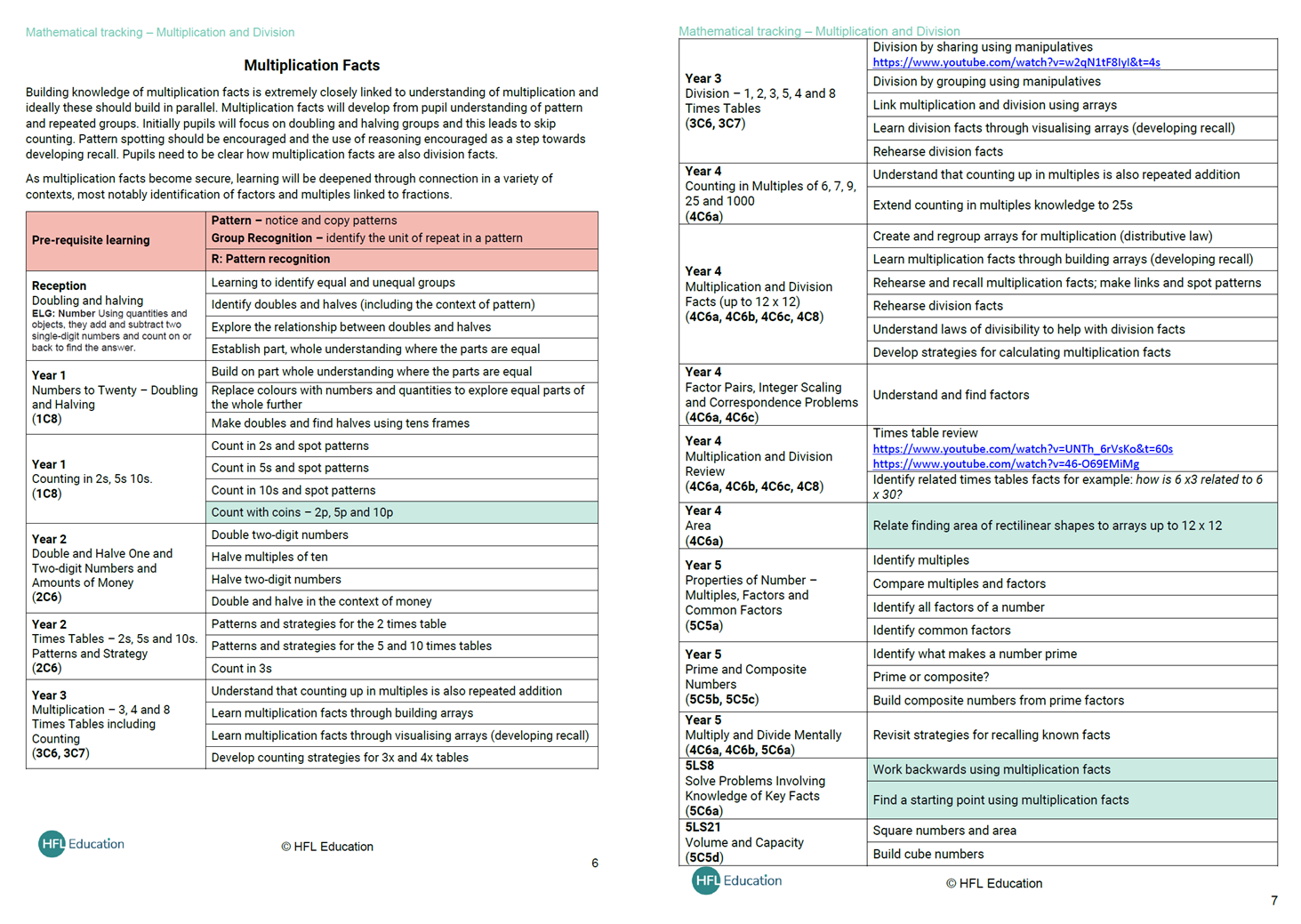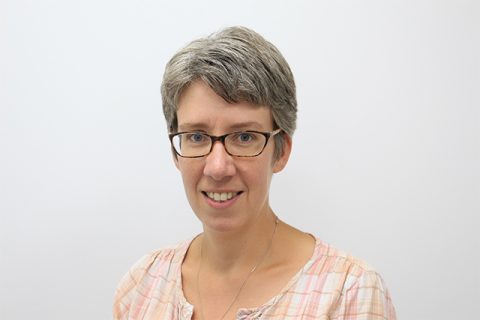
It is a fact that the number of pupils with Special Educational Needs (SEND) is increasing in schools. The latest data from the GOV.UK website(1) states that:
- 2.5% of primary pupils have an Education, Health and Care Plan (EHCP); a 9% increase between 2022 and 2023
- 13.5% of primary pupils have SEN support; a 5% increase from 2022 to 2023
The number of pupils with EHCPs who are in mainstream schools has also increased from 51.4% to 52.7% in 2023. This means that teachers must cater for a wide range of learning needs in their classrooms and this is a challenge.
How do we meet every pupil’s needs?
“…at the heart of the inclusive classroom is simply good teaching.”
The Inclusive Classroom (page 17)(2), Daniel Sobel and Sara Alston
What is good teaching?
I Googled this and the top response said:
“A good teacher is one who is able to explain and demonstrate concepts in a variety of ways for a variety of different learners and learning styles. A good teacher is a good learner – they learn how their student(s) learn and modify their teaching accordingly.”(3)
There is nothing I disagree with here but how can we make this a reality?
The crucial role of the curriculum
Having a clear, well-structured and progressive curriculum is a good starting point to ‘good teaching’; what to teach and in what order is helpful.
Ofsted rightly puts a large emphasis on this and in the Ofsted framework(4), under Quality of Education and Intent, it states:
"leaders take on or construct a curriculum that is ambitious and designed to give all learners, particularly the most disadvantaged and those with special educational needs and/or disabilities (SEND) or high needs, the knowledge and cultural capital they need to succeed in life."
In maths, there are clear, detailed statutory requirements within the national curriculum programmes of study. Many schools use a commercial scheme to support with breaking them into smaller steps. Models, resources and practice are provided to aid teaching and learning.
However, for some pupils with SEND, working within an ‘age-related curriculum’ isn’t possible.
Ofsted recognise this and state:
"the provider has the same academic, technical or vocational ambitions for almost all learners. Where this is not practical – for example, for some learners with high levels of SEND – its curriculum is designed to be ambitious and to meet their needs."
This adds another layer of challenge in the classroom.
What does ‘inclusion’ really mean?
What do you do?
Teach the same curriculum to all and provide support and adaptations?
In the Ofsted report – Coordinating mathematical success: the mathematics subject report(5), the possible pitfalls of doing this are acknowledged.
It was observed that when pupils with SEND receive the same curriculum as their peers with support, usually from another adult, the ‘appearance’ of inclusivity may be taking the place of real inclusivity; the support may be avoiding learning rather than securing it.
For some pupils with SEND, the learning may be beyond their comprehension and therefore a more personalised approach would be needed.
However, I would argue that this could also lead to the pupils with SEND not being included and again, inclusion becomes exclusion.
How to get the balance right
Going back to my Googled definition of good teaching – “A good teacher is a good learner – they learn how their student(s) learn”.
I think this means that you need to start with knowing your pupils well.
Let me introduce Jay – a Year 5 pupil with additional learning needs.
Focus on individual learning needs
Using the table shown in the video can help focus on a pupil’s individual learning needs rather than thinking about any labels the pupil might have. I would argue that knowing a pupil has ADHD or Autism doesn’t ‘tell’ you this individual’s needs.
Sobel and Alson(2) agree:
“By focusing on the child’s needs, strengths and motivators, we can provide more individualised, focused and consequently effective support for their learning. An over-emphasis on ‘labels’ can inhibit this and obscure the child from view.”
Considering barriers, strengths, interests and aspirations will help you begin to unpick the learning need and what provision needs to be put in place. It will help identify ongoing adjustments.
Continue to learn more and make adjustments
Getting to know the pupil well and identifying ongoing adjustments will help when thinking about the curriculum.
Going back again to our definition of good teaching, “A good teacher is able to explain and demonstrate concepts in a variety of ways for a variety of different learners…,” decisions will need to be made as to what is right for Jay at this time. When he will be able to access the same explanations as his peers and when this will need to be varied will need careful consideration.
In Jay’s case, he does need a personalised curriculum but he also needs to be with his peers. To be able to do this well, a good knowledge of the curriculum progression is needed; not just within his chronological year group but the whole curriculum.
This is a lot of knowledge.
Make meaningful connections by tracking back
The HFL Education primary maths team have created a set of tracking back booklets that map the progression through different strands of learning, referencing the content domains from the KS1 and KS2 testing frameworks(6&7).
For example, the teaching of multiplication and division has been separated into five closely related strands of learning.
These strands are:
- Multiplication facts
- Understanding and calculating multiplication
- Understanding and calculating division
- Multiplying and dividing by 10, 100 and 1000
- Multiplication and division problem solving
How would the booklets support Jay?
As an example, when Jay’s peers are learning about factors, the learning this builds upon can be identified:

Facilitate inclusion and collaboration
Initially, Jay may join in with his peers if multiples and factors are introduced through practical exploration. This would be an effective way to introduce the area of learning in year 5 for all pupils to re-cap previous learning and would be accessible for Jay.
Some of the learning might be beyond his comprehension but an opportunity to collaborate with his peers may be his focus.
Once the other pupils move on, Jay’s learning could be tracked back to an appropriate level for him but still within the same strand of learning.
Personalise the learning
The learning has been personalised to a level that is appropriate for Jay but if he grasps learning more quickly, the tracking back booklets identify the small steps through the strand ‘multiplication facts’ towards the age-related expectation. We wouldn’t be holding Jay’s learning back.
On the training day, we will explore further examples of how the tracking back booklets could be used to support pupils with SEND through case studies.
We will also look at the five-a-day framework from the EEF guidance report, “Special Educational Needs in Mainstream Schools”, and explore ways to use these ‘best bets’ (all evidence-based) in the maths classroom.
For schools that use HFL Education’s ESSENTIALmaths resources to support their maths curriculum, there are also tracking back booklets specifically mapped to the small steps within the Learning Sequences.
If you would like to invest in the tracking back booklets but are unable to attend the face-to-face training event, please do get in touch with the team at primarymaths@hfleducation.org.
References
(1) Special educational needs in England, Academic year 2022/23 – Explore education statistics – GOV.UK (explore-education-statistics.service.gov.uk)
(2) Sobel, D & Alston, S (2021) The inclusive classroom: A new approach to differentiation. Bloomsbury
(3) What Makes “Good” Teaching? (knowlesteachers.org)
(4) Education inspection framework - GOV.UK (www.gov.uk)
(5) Ofsted (2023) Coordinating mathematical success: the mathematics subject report Available at: https://www.gov.uk/government/publications/subject-report-series-maths/coordinating-mathematical-success-the-mathematics-subject-report
(6) https://www.gov.uk/government/publications/key-stage-1-mathematics-test-framework
(7) https://www.gov.uk/government/publications/key-stage-2-mathematics-test-framework



